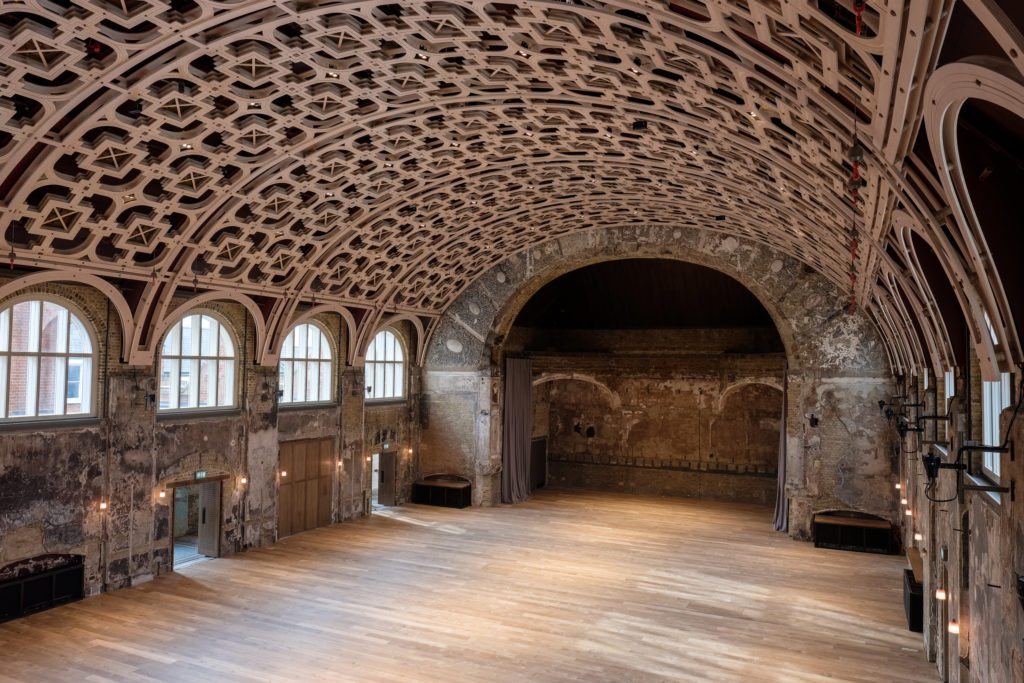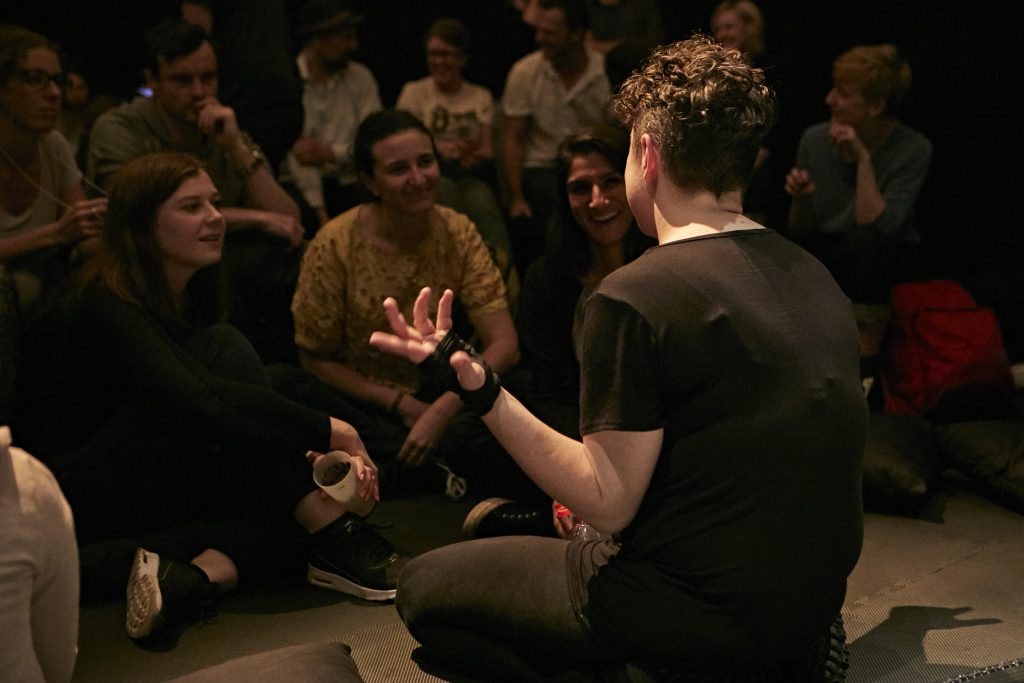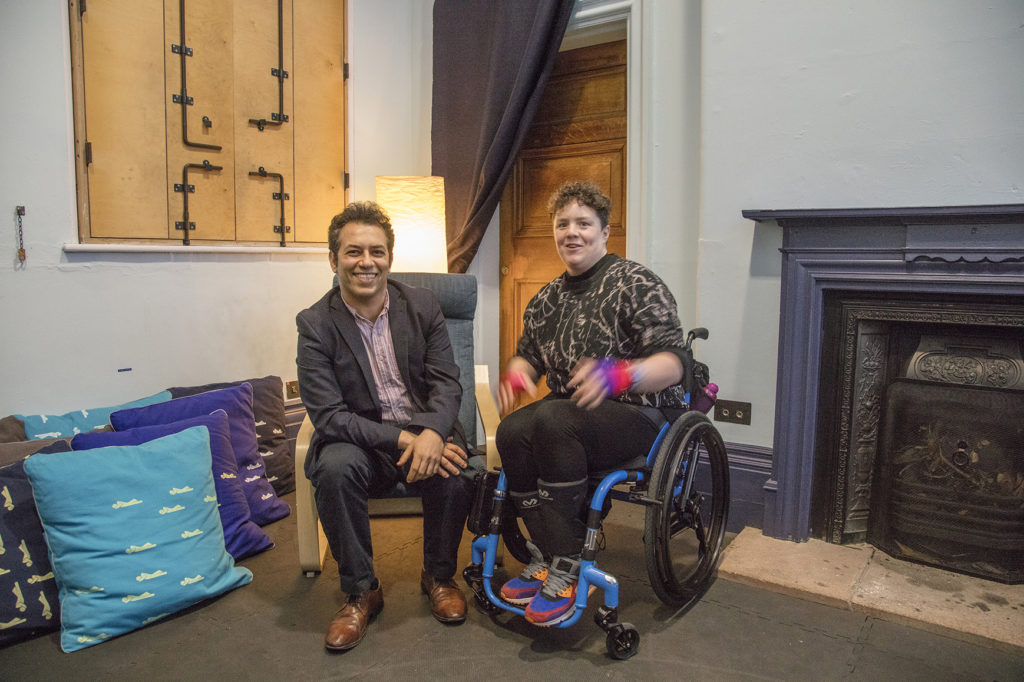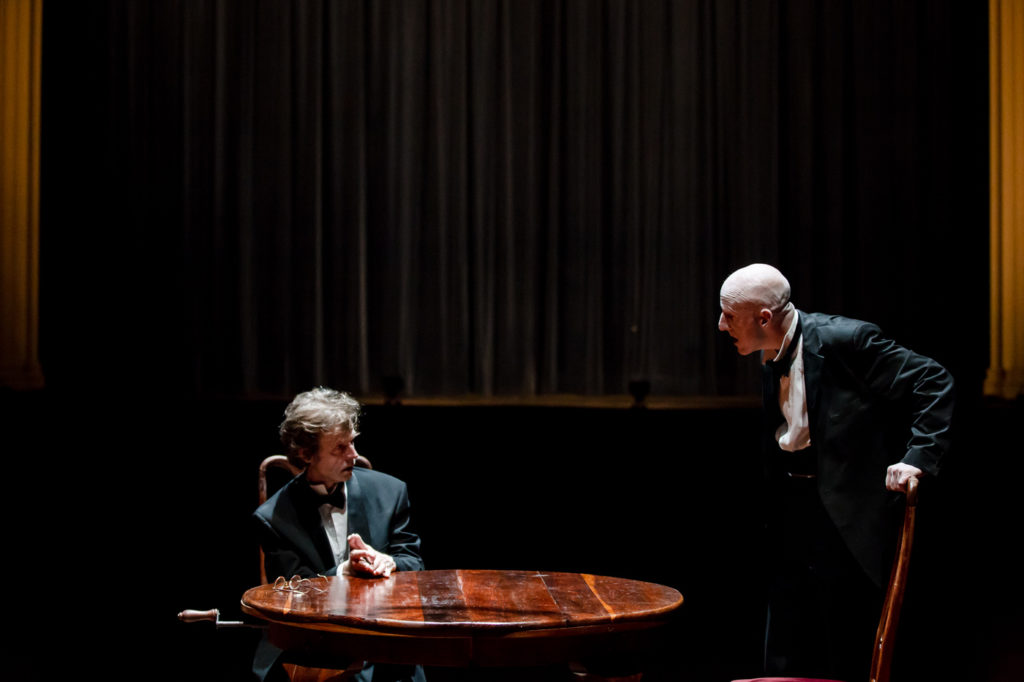Colin Hambrook, Editor of Disability Arts Online looks at the collaboration between Touretteshero and London’s Battersea Arts Centre, a multi-arts venue, which has sought to expand the concept of a relaxed performance across the entire culture and practices of the organisation.

Battersea Arts Centre (BAC) occupies the former Battersea Town Hall, built in 1893, it became an independent arts venue in 1979. It now welcomes 160,000 visitors, puts on 400 performances and tours 12 shows or projects, every year. BAC is known as a pioneer of new practice in contemporary theatre with the development of Scratch in 2000, the creation of Punchdrunk’s Masque of the Red Death in 2007 (which transformed approaches to immersive theatre) and the supporting of key UK theatre artists such as Kneehigh, Ridiculusmus and Forced Entertainment.
Working with Battersea Arts Centre since early 2017, the company Touretteshero, co-founded by Jess Thom has been exploring and instituting ways to radically embed access and inclusivity across all of its activities, opening itself up to attract new audiences.
Battersea Arts Centre is the first venue to have gone through Touretteshero’s Relaxed Venue method of identifying and dismantling the barriers faced by disabled people. It strives to make the entire experience of visiting an arts venue more welcoming, accessible and inclusive with the potential to radically challenge the way that theatre is received.
What began as an idea for Thom to explore her experience of having Tourettes Syndrome through creative interventions has evolved into a methodology available for other organisations wanting to entirely rethink their approach to access.

“To make the change towards becoming a Relaxed Venue is about challenging existing systems, structures and the distribution of power” explains Thom. “That’s particularly tricky when that relates to your direct lived experience. For example, if another artist doesn’t want to engage with relaxed performance, then that can be quite difficult for me, personally, because it’s like you’re saying you don’t want me as part of your audience or you’re saying that I can only be part of your audience if I put elements of my body, identity and wellbeing on the line.”
The aim at BAC has been to create a space that is flexible enough, responsive enough, open enough to work for a diversity of bodies and minds. The process aims to take labour away from disabled people in having to justify themselves, founded on the idea of access without judgment. Rather than assuming that particular types of access provision are for particular people, it’s about putting as much in place as possible, in a multi-sensory, multi-faceted way without prescribing who will or will not use those resources. Thom expands on this:
“So often access is seen simply as the domain of what happens front of house, but it’s way more nuanced and complex than simply saying BAC has made all their performances relaxed. It’s about challenging the producing, creating and leadership processes. At its heart, a relaxed venue flips the assumption about whether or not disabled people should be in those spaces – as audience, as artists, and as staff.”
Relaxed Performances were originally devised to make performance more accessible to people disabled by the usual rules of theatre etiquette. The principles encompass everything from clear, understandable advance information, to taking a relaxed approach to movement and noise coming from the audience. Over 90% of performances at Battersea Arts Centre since Autumn 2018 have been relaxed, with the benefits having been felt by a huge range of audiences, such as autistic people, those with learning disabilities, movement issues, dementia, or just people with very loud laughs.

Artistic Director and CEO Tarek Iskander says the venue has been transformed far beyond what could have been imagined, altering how the organisation thinks of itself and its relationship to the world: “There’s a new immediacy and contact between the live performers and audiences that didn’t previously exist. This isn’t just a positive economic or ethical choice, it’s a positive artistic one. The work we have done has been transformational, not just for a few people, but for everyone who comes into our building.”
Iskander’s describes the impact of that change as akin to bringing something of the spirit and vibrancy of the Globe’s Pit to the venue.
“There are a lot of cultural spaces where you can sit in silence, as still as possible with others who want to experience art in that way too. You are really well catered for. But at BAC we don’t feel we can truly call ourselves a place for live performance that reflects and is a part of the world unless everyone who wants to can come in and be a part of it. Otherwise why are we doing it and who is it for? Why find reasons to exclude everyone artificially – it actually takes a lot of work and effort to police spaces in that way. We’ve only forgotten how hard that is because of hundreds of years of habit. The world outside doesn’t exclude people – everyone exists in it together, whatever our differences. Why should BAC be any different?”
BAC’s commitment to being a relaxed venue has changed the culture of the space. Their website has a lot of repetition about what relaxed performances involve so there are lots of references available to inform producers and artists about the methodology behind that change. It is a process of education to have the right conversations and to dispel reluctance or resistance to the idea of what Relaxed means.
Kelsie Acton, Inclusive Practice Manager at Battersea Arts Centre talks further about the kinds of negotiation that takes place: “We are very clear with artists about what our definition of relaxed performance includes. Of course, there’s often hesitation and uncertainty when artists actually come into the building. So having repeated conversations with artists and producers is key to the success of this – artists get to talk through possible scenarios and really imagine what doing an entirely relaxed run is like.”

So conversations take artists and producers through the specifics of the process for any given show. Acton continues: “artists often ask how they respond if someone leaves or makes noise. My sense is that producers often have a lot of conversations with artists about the logistics of the pre-show announcement, trying to figure out the best way for it to happen for the show – does the duty manager read it, does the artist record it, do they use a pre-recorded version? It’s all about trying to find the details of the relaxed performance that best suit a particular performance.”
And it is clear from BAC’s experience that the act of being a relaxed venue is benefitting more than just the communities of disabled people that the venture has set out to include. Iskander spoke of a performance by Ridiculusmus of ‘Die! Die! Die! Old People Die!’ at BAC in 2019: “They opened the show by taking a tortuous 15-minute shuffle to get to the middle of the stage before starting. After the walk was done (by which time the audience were getting quite fidgety) they broke the silence with the relaxed performance announcement. The break in tension through laughter was palpable.”
Jess Thom recalls a piece in Exeunt Magazine by the journalist Maddie Costa, who brought her 10-year-old son to a show at BAC, and being able to feel his body relax the moment that the announcement about it being a relaxed performance was made. Her son felt his fidgety body was fine and knew that if he needed something, or didn’t understand something and needed explanation, that it was fine for him to whisper to his mother.
Thom says: “It’s about giving everyone that freedom to be themselves exactly as they are. Within that idea lies the freedom to take creative risks with a core part of who you are. Often in cultural spaces, lots of us are prevented from taking creative risks to different extents, because we have to focus on the practical requirements of our bodies. If you can follow the conventions of a theatre etiquette, then you probably follow them unquestioningly, without a thought. If you neurologically can follow the rules, then people tend to go along with that. Even if that’s not the most comfortable way for people to experience theatre. Attention and focus looks different in different types of bodies.”
As well as reassuring artists about their Relaxed Venue method Battersea Arts Centre is looking to encourage other arts venues to pick up the baton and challenging the accepted mode of theatre etiquette. It’s a political move in the way it brings audiences and performers closer together in ways that theatre has not engaged with before. In that sense it continues the challenge to social engagement and who is not allowed to be in the room that has been a mark of activity in the space since the building first opened.

